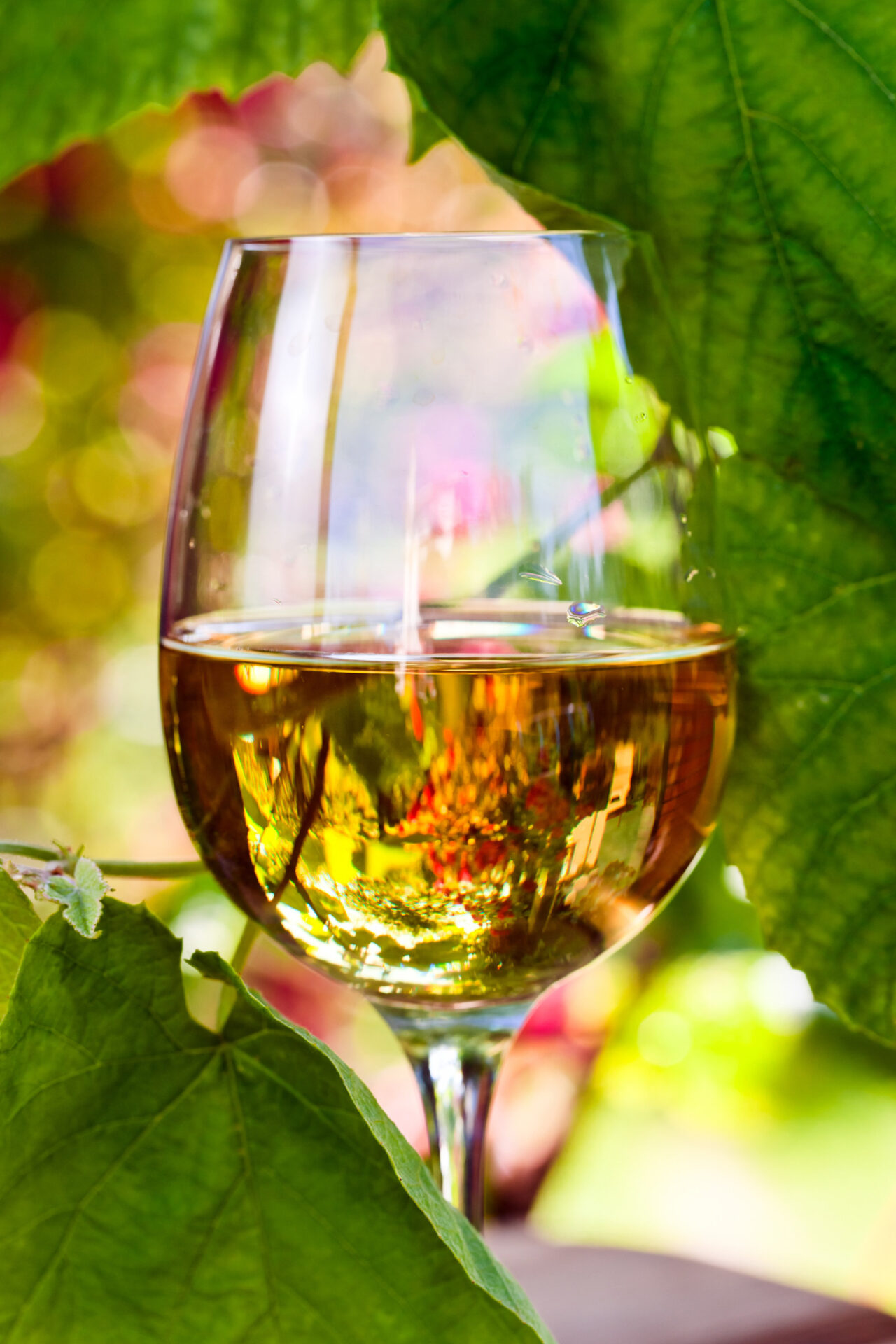
Everything you need to know about Chardonnay.
Chardonnay is one of the most versatile and expressive grapes out there.
It’s one of the first varietals that came into my awareness, thanks to an ex-boyfriend’s mom (hi, Cheryl!) It was her drink of choice with everything, everywhere we went.
For the longest time, however, I thought that I, at best, could just barely tolerate it.
Due to the style of the day that was popular as I was coming into wine awareness, I had no interest. It was somehow both over oaked and overly acidic at the same time, completely unappealing to me. I was part of club ABC (anything but Chardonnay).
Then I had Ram’s Gate. Ram’s Gate 2015 Hyde Vineyard, to be exact. And it changed my life.
Not only did it awaken me to this versatile variety, but it also made me realize that I could truly love white wines, and that whites were just as capable of being rich, complex, and luxurious as red wines.
Chardonnay is one of the most expressive and moldable grapes out there.
It can be a luscious expression of tropical fruits such as pineapple, starfruit, and mango when grown in warmer climates; it can demonstrate refined acidity and refreshing characteristics of apples, green fruit, and citrus if from a cool-climate.
When oaked, it can be full of creamy, delectable butter notes. Or if aged in stainless steel it can be a lean, light-bodied wine that lets the fruit-notes shine.
It’s a grape that wears many hats and comes in a full range of styles.
Chardonnay is also one of the three varietals used in Champagne (the other two are Pinot Noir and Pinot Meuneir. More on Champagne here). And if the Champagne bottle is labelled “Blanc de Blanc”, it’s from 100% Chardonnay grapes.
Starting to get the picture? Chardonnay isn’t just one thing, and there’s something out there for every wine lover.
I, personally, am obsessed with creamy, buttery Chardonnays that are rich with notes of toasted butterscotch and creamy butter. Malolactic fermentation? Yes, please!
Recommended: Best Chardonnay – Shopping Guide

How to Find Your Perfect Glass
Oaked vs. Unoaked Chardonnay
An oak aged Chardonnay has been aged with the use of oak in the winemaking process. This introduces more oxygen in the winemaking process, as oak barrels are porous and allow aging wine to “breathe”.
This process results in more baked apple, almond, and pie crust flavors. The oak itself lends notes of vanilla, clove, and cinnamon, and if the barrel has been toasted on the inside, you’ll notice additional layers of butterscotch.
As the wine matures in the oak barrels, it also often goes through Malolactic Fermentation; this process changes tart-tasting malic acid (naturally present in grapes) to softer, creamier lactic acid, adding rich notes of butter and an oily-like texture.
An unoaked Chardonnay, in contrast, is more “varietal pure” and expresses more notes natural to the grape varietal.
Typically these are aged in stainless steel, which limits oxygen exposure and doesn’t impart any new flavor characteristics onto the wine. These will be lean, mineral, and fresh with floral and citrus notes.
Warm Climate vs. Cool Climate
Chardonnay is the world’s most planted white grape and is adaptable to many different climates. You’ll find it in hot, sunny regions as well as cool regions.
The highest rated Chardonnays tends to come from cooler climates, the most notable being Burgundy, France.
This is due to the grape’s ability to maintain acidity as it ripens. In cool climates, grapes are able to ripen slowly, maintaining its acidity over time. Cool-climate versions of this wine tend to demonstrate more “cool” fruit varietals, such as green apple, lemon, and lime.
Warm-climate, on the other hand, gravitates towards fruitier, more tropical notes and a fuller body. You’ll notice flavors of pineapple, mango, and guava.
By mixing the above four options in varying degrees, you end up with a wide range of wines. There’s something out there for everyone!
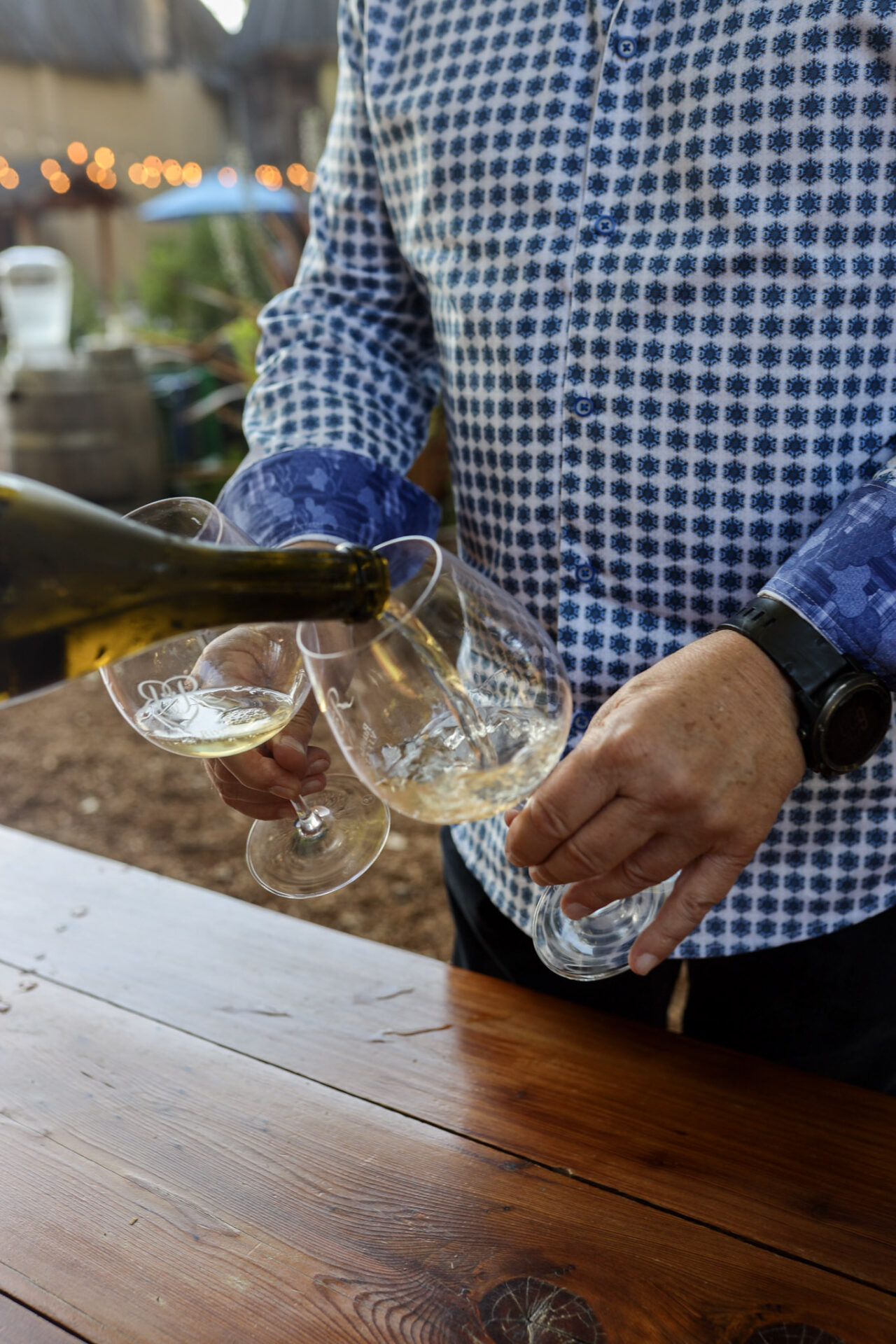
How to Serve Chardonnay
Are you wondering: Should Chardonnay be chilled?
Full-Bodied whites, such as Chardonnay, Albariño, Trebbiano, and Viognier should be served at 0–55°F to enhance their layered aromatic characteristics and rich flavors.
As a general rule of thumb, if you’re looking to get super specific, the less oaky the wine, the closer to 50°F it should be served.
If taking the temperature seems to be too much work, I recommend placing wines in the fridge overnight or at least for a few hours. You then want to take it out of the fridge approximately 30 minutes before you’re ready to serve. The fridge will take the wine’s temperature down too low, but after 30 minutes it should be the ideal temperature to serve.
Chardonnay should be served in white wine glasses.
Want to learn more about drinking and serving wine? Check out my self-paced online course: 7 Days to Wine Confidence.
Can You Age Chardonnay?
How long will Chardonnay age?
It depends on the style and quality of the wine. Top Chardonnays aged in fine oak can be cellared for several years, though most American white wines are consumed within 1-2 years of their release.
Some of the best Chardonnays in the world, such as white Burgundy, can be aged for decades and still retain their beautiful balance, developing complex tertiary flavors of spice, nuts, and earth.
Higher quality wines equal greater aging potential.
Is Chardonnay Sweet or Dry?
Most Chardonnay is dry. While the style of the wine can vary greatly based on winemaking practices and growing conditions, for the most part Chardonnay is a dry white wine with a medium to full body, moderate acidity, and moderate alcohol.
Occasionally you will find a sweet or dessert version, but these are usually very limited in production and will be marked clearly on the label as such.
Read our full guide: Is Chardonnay sweet or dry?
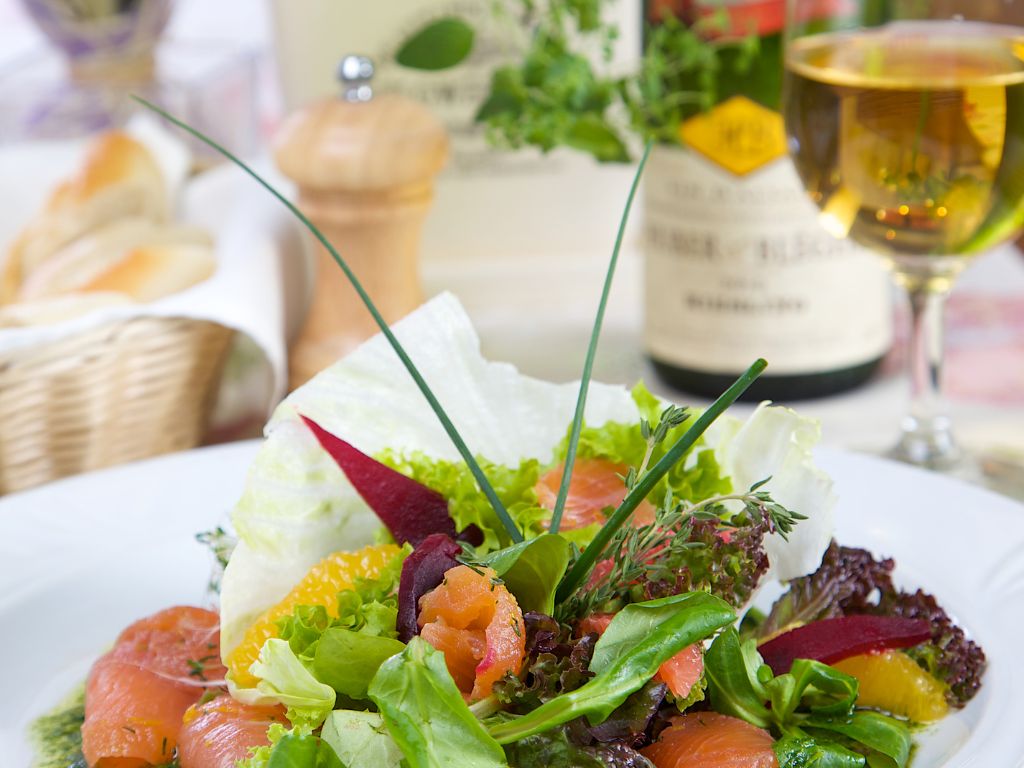
Can Chardonnay Wine be Used for Cooking?
Cooking with Chardonnay is an absolutely wonderful idea! If you’re planning on cooking with your wine, I recommend looking for one with low-oak contact, as oak can be overpowering when paired with food.
Cooking with Chardonnay will impart a richness to your food that’s not found with other white wines.
It’s best in heavy cream dishes, such as gravy or cream sauce for pasta. In these dishes, it will balance out the acidity while bringing out its flavors. I also love it on scallops with a butter/wine sauce.
Read more: White Wine for Cooking
Chardonnay Food Pairings
Chardonnay is a versatile white wine that pairs well with a variety of dishes. Its characteristics can vary depending on the winemaking style, but in general, it can complement the following foods:
Poultry: Chardonnay’s balanced acidity and sometimes buttery notes make it an excellent match for poultry dishes, such as roasted chicken, turkey, or duck.
Seafood: This wine’s crispness pairs nicely with seafood, including buttery lobster, creamy seafood pasta, or grilled shrimp.
Creamy Sauces: The texture and sometimes buttery or oak-driven flavors are a great match for dishes with creamy sauces, like Alfredo or béchamel-based pastas.
Mild Cheeses: Pairs well with mild cheeses like Brie, Camembert, or Gruyère. The wine’s acidity can cut through the creaminess of these cheeses.
Vegetarian Dishes: It complements vegetable-based dishes, especially those with a touch of richness like roasted butternut squash risotto or creamy mushroom soup.
Pork: Whether it’s a pork tenderloin roast or a dish with a creamy mushroom sauce, Chardonnay can complement the flavors of pork dishes.
Appetizers: Chardonnay is a great choice for appetizers like bruschetta, crab cakes, or stuffed mushrooms, as it complements a variety of flavors.
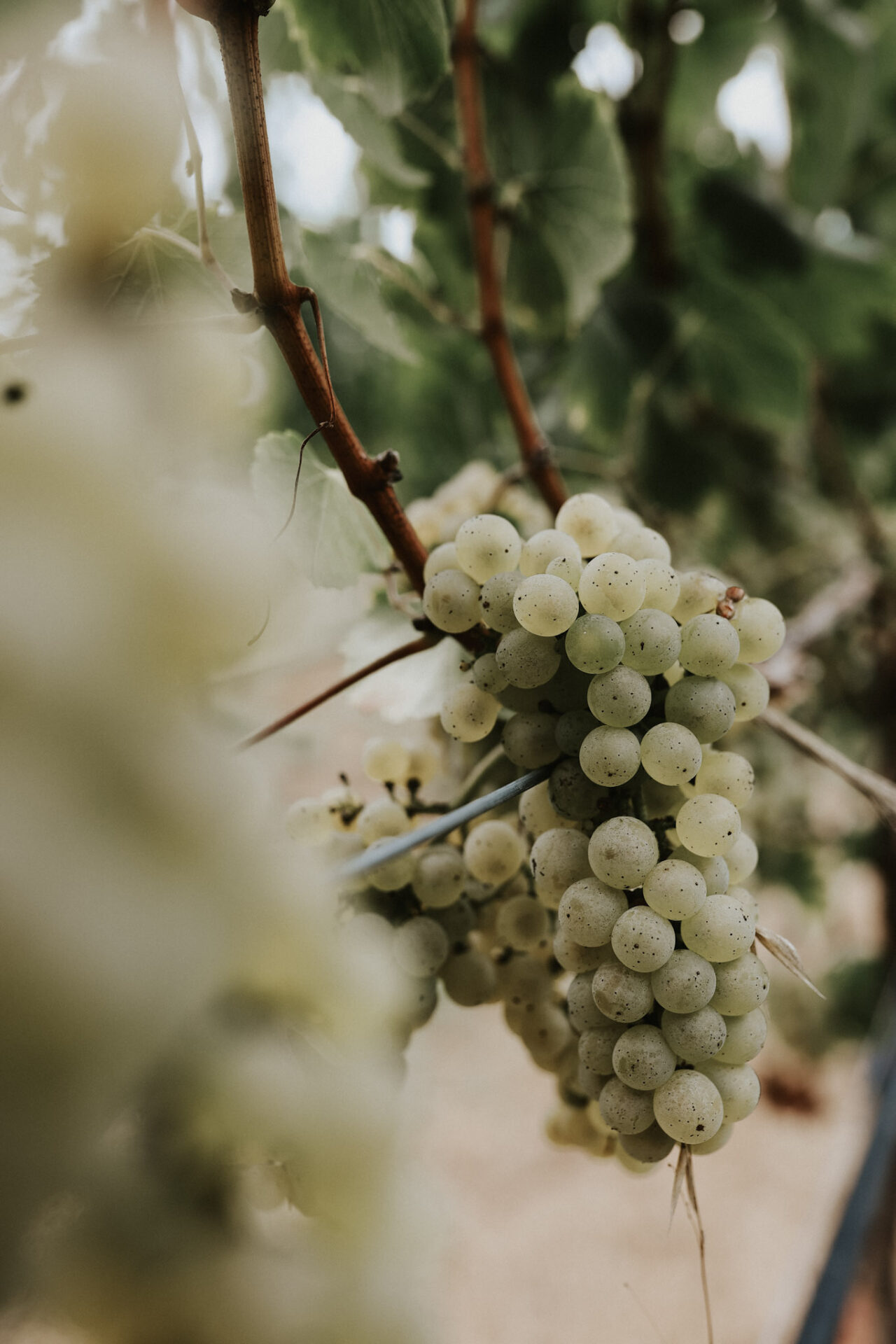
Chardonnay is Versatile
If you’re currently opposed to anything Chardonnay, I encourage you to keep looking.
Try a warm climate, try a cool climate, try oaked, try unoaked. Experiment freely and chat with your friends at the wine shop; they’ll point you in the right direction.
Chardonnay taste varies so much based on where it’s grown and the winemaker’s style. I’m convinced there’s a style of this wine for everyone.
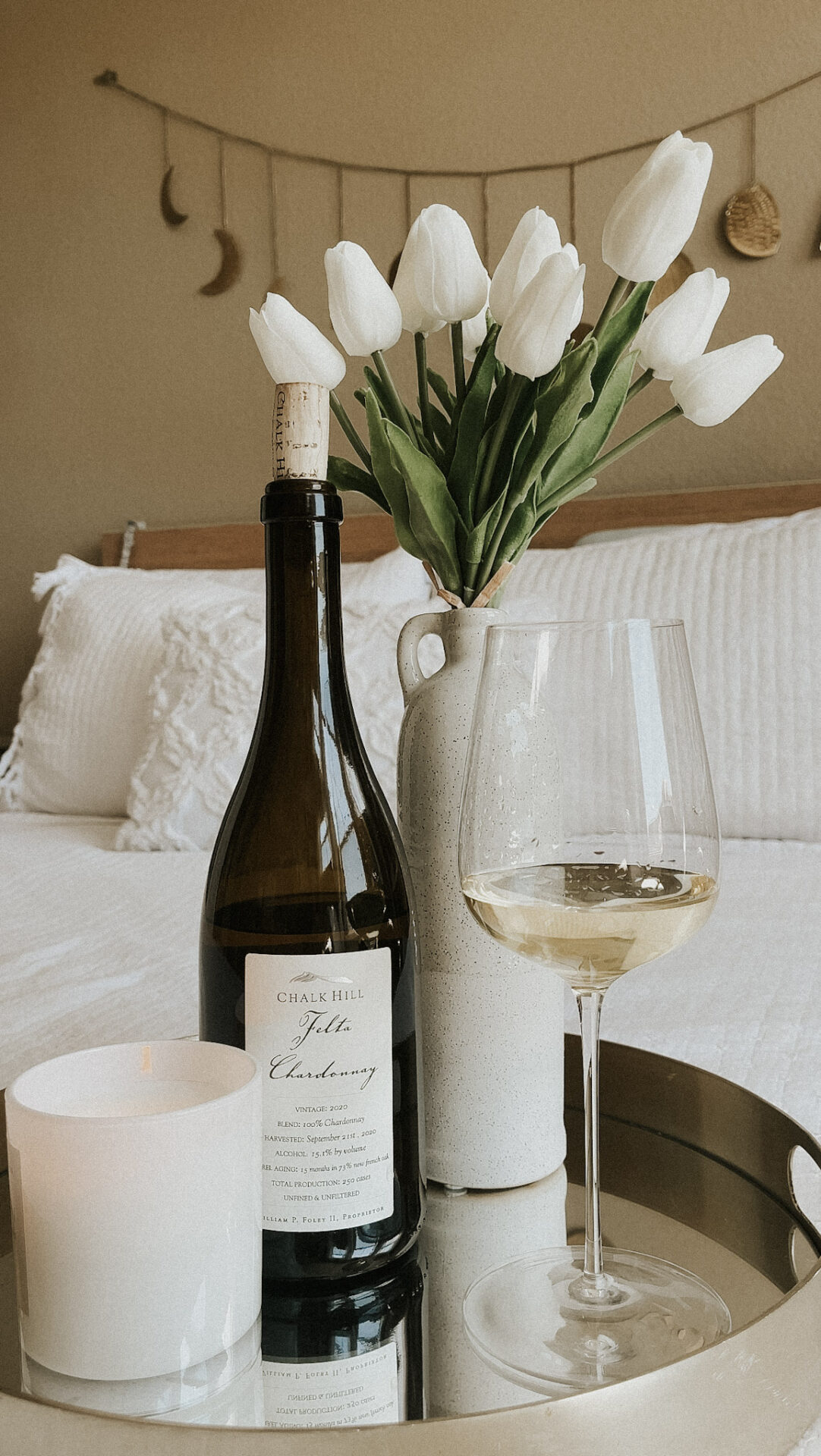
Commonly Asked Questions
Is Chardonnay dry?
Yes! Chardonnay is a dry white wine. While it can exist in a range of styles, most versions out there (unless labeled otherwise) will be dry.
Is Chardonnay white wine?
Chardonnay is a dry white wine. It’s made from green grapes and becomes a beautiful lemon color when pressed and turned into wine.
What is Chardonnay?
Chardonnay is a popular dry white wine with flavors of apple, citrus, vanilla, and toast.
What does Chardonnay taste like?
Chardonnay’s flavor profile varies, but it often features notes of green apple, citrus, and a range from crisp and mineral-driven in unoaked versions to creamy and buttery in oaked styles.
Is Chardonnay Champagne?
No, “Chardonnay” typically refers to a still wine. However, some champagne is made from Chardonnay grapes! Check out our guide to Blanc de Blancs.
